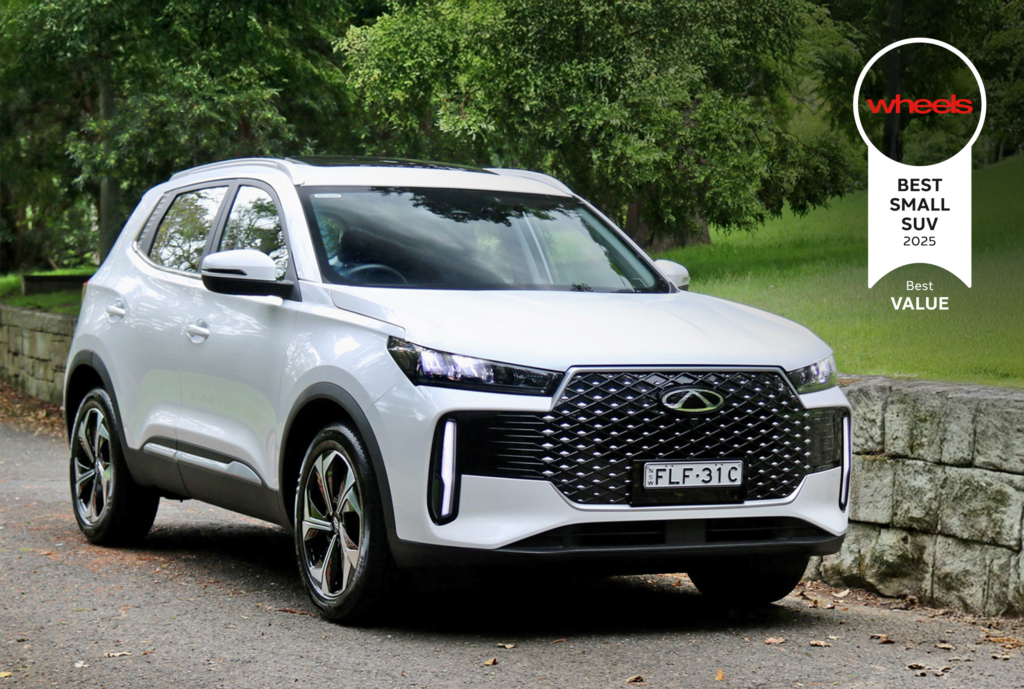The Contenders
- Volvo EX40
- MG ZS EV
- BYD Atto 3
- Kia Niro EV
- Volvo EX30
- Lexus UX300e
- Kia EV3
- Chery Omoda E5
- BMW iX1
- Mercedes-Benz GLA and GLB
- Smart #1 and #3
- Zeekr X
- Audi Q4 e-tron
- Hyundai Kona Electric
Winner: Volvo EX40 (formerly XC40 Recharge)
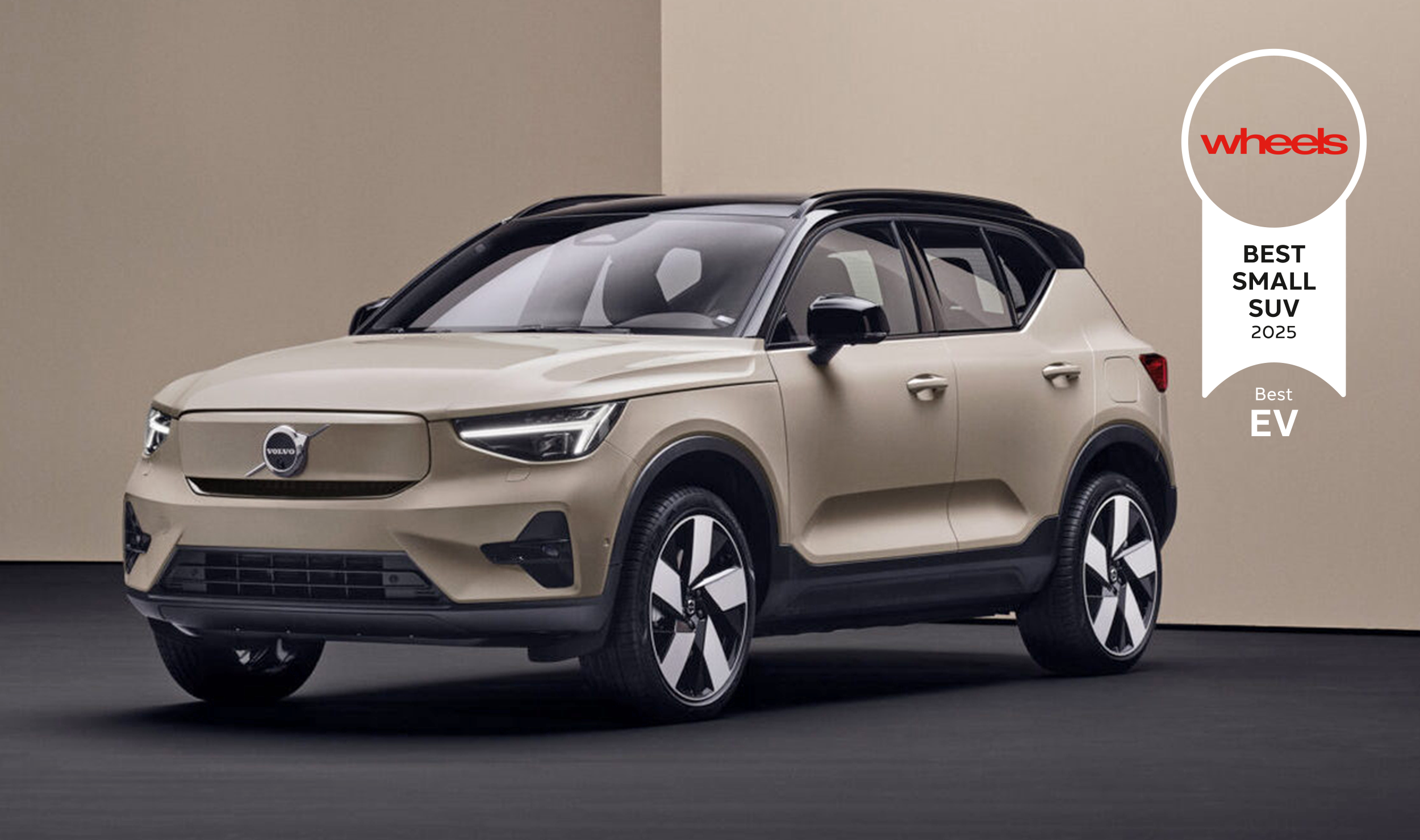
- Price: From $76,990 plus on-road costs (Ultra Single Motor)
- Drivetrain: 185kW/420Nm (single motor) or 300kW/670Nm (dual motor), 82kWh battery
- NEDC range, peak charging speed: 485-520km, 135kW (single motor) – 200kW (dual motor)
- Warranty: 5-year/unlimited km, 8-year/160,000km for the battery, five years of roadside assistance
- Five-year service cost: Included in the cost of the car
| Driving | |
|---|---|
| Interior | |
| Practicality | |
| Overall value |
Things we like
- Excellent performance
- Good quality and practical cabin
- Lots of standard equipment
Not so much
- Expensive starting price
- Little personalisation
- Can be energy hungry
The Volvo EX40, formerly known as the XC40 Recharge, is larger than the small EX30 and is almost mid-sized in its dimensions. The interior practicality – as you’d expect for a Volvo – is excellent with a spacious rear seat and boot that make it one of the most practical small SUVs on the market.
Starting at $76,990 plus on-road costs, the EX40 is not cheap to buy but Volvo recently made more equipment standard on the entry-level single motor variant, matching the formerly-upper-spec dual-motor car.
Inside the EX40 is a long list of standard equipment, and excellent quality as well – as you’d expect from this brand. There are plenty of practical touches like big door bins and a big central storage system, while the 410-litre boot is larger than you might expect in person.
Although the ride quality can be a bit sharp thanks to the standard 20-inch wheels, the EX40 is still an impressive drive. It’s comfortable but can also be fun as well. Even the 185kW single motor variant is quick, but the 300kW twin motor definitely pushes you back in your seat. The EX40’s range is not amazing, however.
Like the smaller EX30, Volvo includes five years of servicing in the EX40’s price. Overall this is a stand-out in the segment – It’s handsome, practical, good to drive, well equipped and even though it’s on the pricier side, the long list of equipment helps to justify the cost.
MG ZS EV

- Price: From $36,888 drive away (Essence)
- Drivetrain: 130kW/280Nm (Essence) or 115kW/280Nm (Long Range) electric motor, 51.1-72.6kWh battery
- WLTP range: 320km-440km
- Warranty: 10-year/200,000km, 12 months of roadside assistance renewed with each MG service
- Six-year service cost: $1,998 ($333 per year)
| Driving | |
|---|---|
| Interior | |
| Practicality | |
| Overall value |
Things we like
- Excellent value for money
- Good quality and practical cabin
- Lots of standard equipment
Not so much
- Range could be better
- Almost sold out
- Odd driving position
MG’s first electric car in Australia, the popular ZS EV, is not long for this world. Priced at a special $36,888 drive away for both the base Essence and upper-spec Long Range to clear stock ahead of a new model later in the year, the ZS EV is currently excellent buying at a bargain price.
The ZS EV models use a front-mounted electric motor, with the Essence making 130kW/280Nm, though the Long Range makes slightly less power at 115kW/280Nm. Both offer peppy performance, especially in urban situations. The ZS EV’s ride quality isn’t bad either, though it can feel a bit underdamped in larger bumps.
The cabin of the ZS EV is nearly identical to the ZS that debuted almost 10 years ago, so it doesn’t feel that modern, but the quality is reasonable and it’s practical as well. The 10.25-inch touchscreen is well equipped as well, with features like sat-nav, smartphone mirroring and even access to the brand’s ‘iSmart’ smartphone app.
The ZS EV’s cabin is also practical and can carry four adults comfortably. The rear seat is roomy enough for two, especially in headroom, and the 359-litre boot is reasonable as well. Covering the ZS EV is a 10-year/200,000km warranty and the service cost for the first six years costs just $1,998.
Overall, the MG ZS EV was a commendable first effort for the brand, and it’s no surprise to see that it’s sold well locally. Now in run-out at a bargain price, the ZS EV’s appeal is even stronger – especially now that the Long Range model is priced the same as the Essence with the smaller battery. While it’s not the newest car around, the ZS EV still offers a good range, a practical cabin and reasonable performance as well.
BYD Atto 3
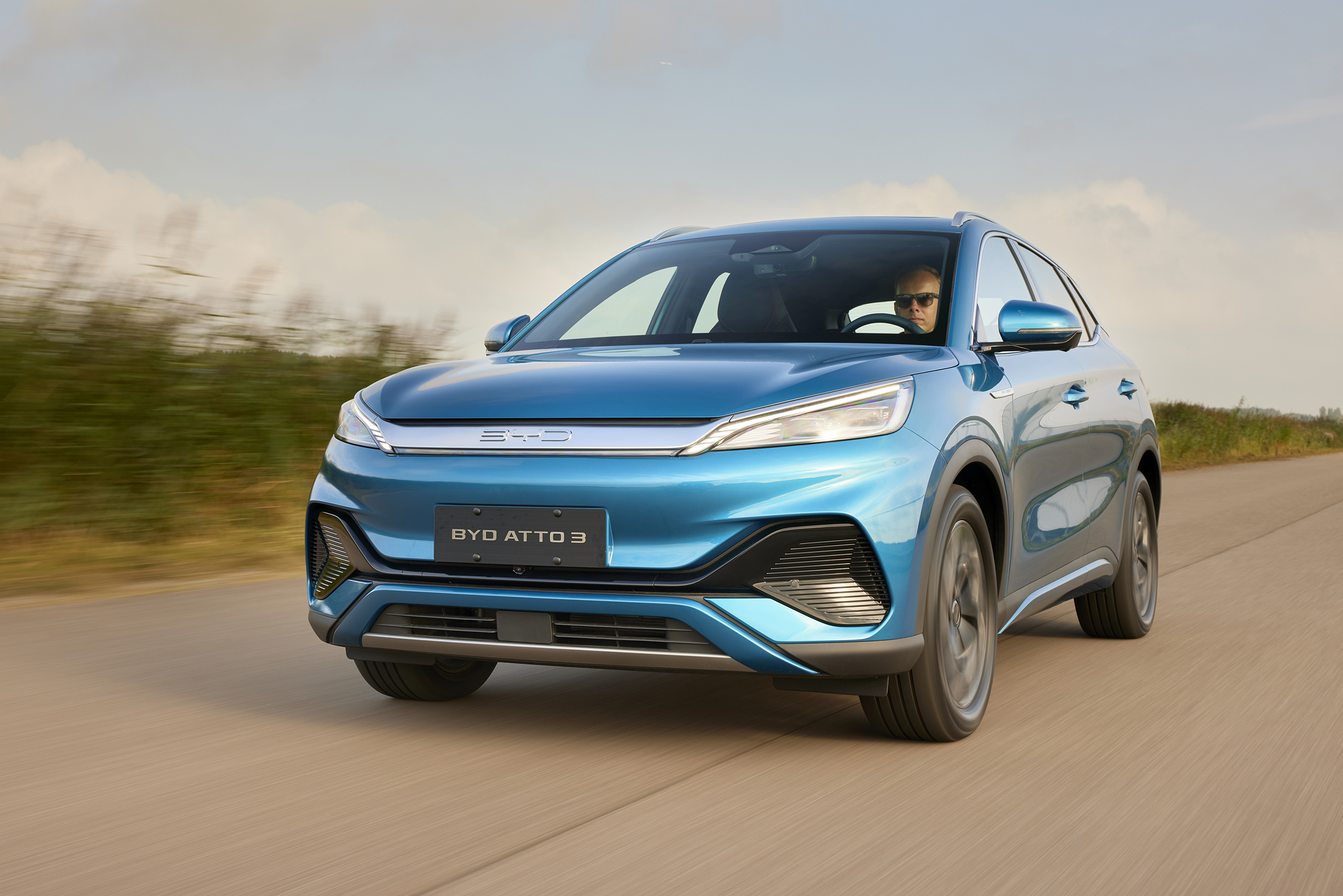
- Price: From $39,990 plus on-road costs (Essential)
- Drivetrain: 150kW/310Nm electric motor, 49.9-62.2kWh battery
- WLTP range: 345km-420km
- Warranty: 6-year/150,000km, 8-year/160,000km battery warranty, 12 months of roadside assistance renewed with each BYD service
- Five-year service cost: $1,628 ($325 per service)
| Driving | |
|---|---|
| Interior | |
| Practicality | |
| Overall value |
Things we like
- Excellent value for money
- Good quality and practical cabin
- Lots of standard equipment
Not so much
- Essential’s range could be better
- Big price gap between the two models
- Rubbish standard tyres
There’s a brand currently on sale in Australia making big waves, and this is the car that started it all for them locally. Of course, we’re talking about BYD and its Atto 3 small electric SUV, which has sold solidly since its introduction locally in 2022.
Since its launch, the Atto 3’s entry price has fallen to just $39,990 plus on-road costs for the new entry-level Essential model, and it’s pricing that attracted buyers to the Atto 3 in the first place. But there’s more to the model, including a long standard equipment list, an attractive and good quality cabin, and solid practicality.
The Atto 3 offers a choice of two batteries: a 49.9kWh one in the base Essential or a larger 62.2kWh unit in the upper-spec Premium. Range is WLTP-rated at 345km for the Essential and 420km for the Premium, with DC fast charging at up to 70kW in the Essential and 88kW in the Premium. Both variants use a 150kW/310Nm electric motor that drives the front wheels, and performance is peppy rather than brisk, but that’s fine.
The Atto 3’s driving dynamics aren’t incredible either, it must be said, which is something that would be better without the standard Atlas Batman tyres. But the Atto 3 is comfortable to drive and offers good bump suppression. The Atto 3’s cabin is also funky to look at, with a huge 12.8-inch touchscreen that rotates and the quality is pretty good as well.
Overall, the BYD Atto 3 is a solid entrant to the small SUV segment and it’s no surprise that it has sold well locally: it’s very well priced, good quality, reasonable performance, practical and covered by an above-average warranty. The new Essential trim has made it even better priced than before, yet it’s still well equipped across the range.
Kia Niro EV
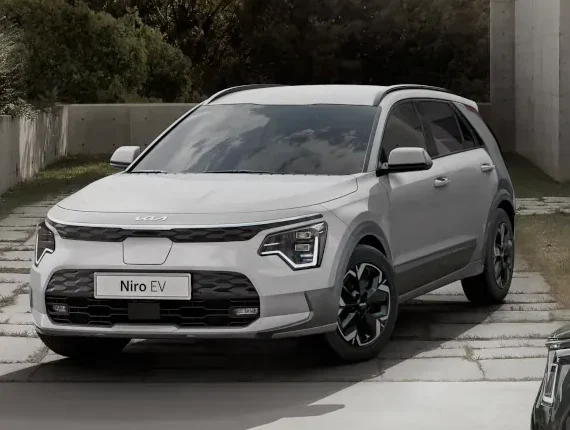
- Price: From $66,590 plus on-road costs (S)
- Drivetrain: 150kW/255Nm electric motor, 64.8kWh battery
- WLTP range, peak charging speed: 460km, 85kW
- Warranty: 7-year/unlimited km, 8-year/160,000km battery warranty, 12 months’ assistance extendable with dealer servicing up to eight years in total
- Five-year service cost: $1,351 ($270 per year)
| Driving | |
|---|---|
| Interior | |
| Practicality | |
| Overall value |
Things we like
- Handsome styling
- Electric drivetrain works well
- Good to drive with a great ride
Not so much
- Expensive across the range
- Cheaper non-hybrid Seltos is more practical
- Cheaper EV3 is much newer
The Kia Niro is the brand’s unique hybrid and electric small SUV that differs from the larger, cheaper and petrol-only Seltos. Priced from $66,590 plus on-road costs in electric form, the Niro can also be had as an hybrid and both are available in either base S or top-spec GT-Line form. Both the S and GT-Line are relatively well equipped, though the S still lacks features like a leather steering wheel or LED headlights, making the $5,770 jump to the GT-Line worth it in our view.
The cabin of the Niro is funky and much better quality than the basic Seltos’ cabin, with more soft touch surfaces in order with its more expensive pricing and higher-tech drivetrains. Its front cabin is also more practical than the Seltos with lots of storage, though the rear seat and boot aren’t quite as large. Measuring 425-litres with the seats up, the Niro’s boot is average in size.
On the road, the Niro range shows off its Australian-tuned suspension with excellent ride and handling that shames a lot of competitors. The electric drivetrain isn’t the quickest, but has more than enough grunt for most buyers.
Kia’s warranty coverage is above average in this company, and the Niro EV’s service pricing is cheap at just $270 per year.
The Kia Niro has a lot going for it, including a handsome design, practical and tech-filled cabin, a peppy and efficient drivetrain and a long warranty. Counting against it is its expensive pricing and that its ICE-powered Seltos sibling – let alone the Hyundai Kona Electric that it shares so much with under the skin – is less expensive to buy.
Volvo EX30
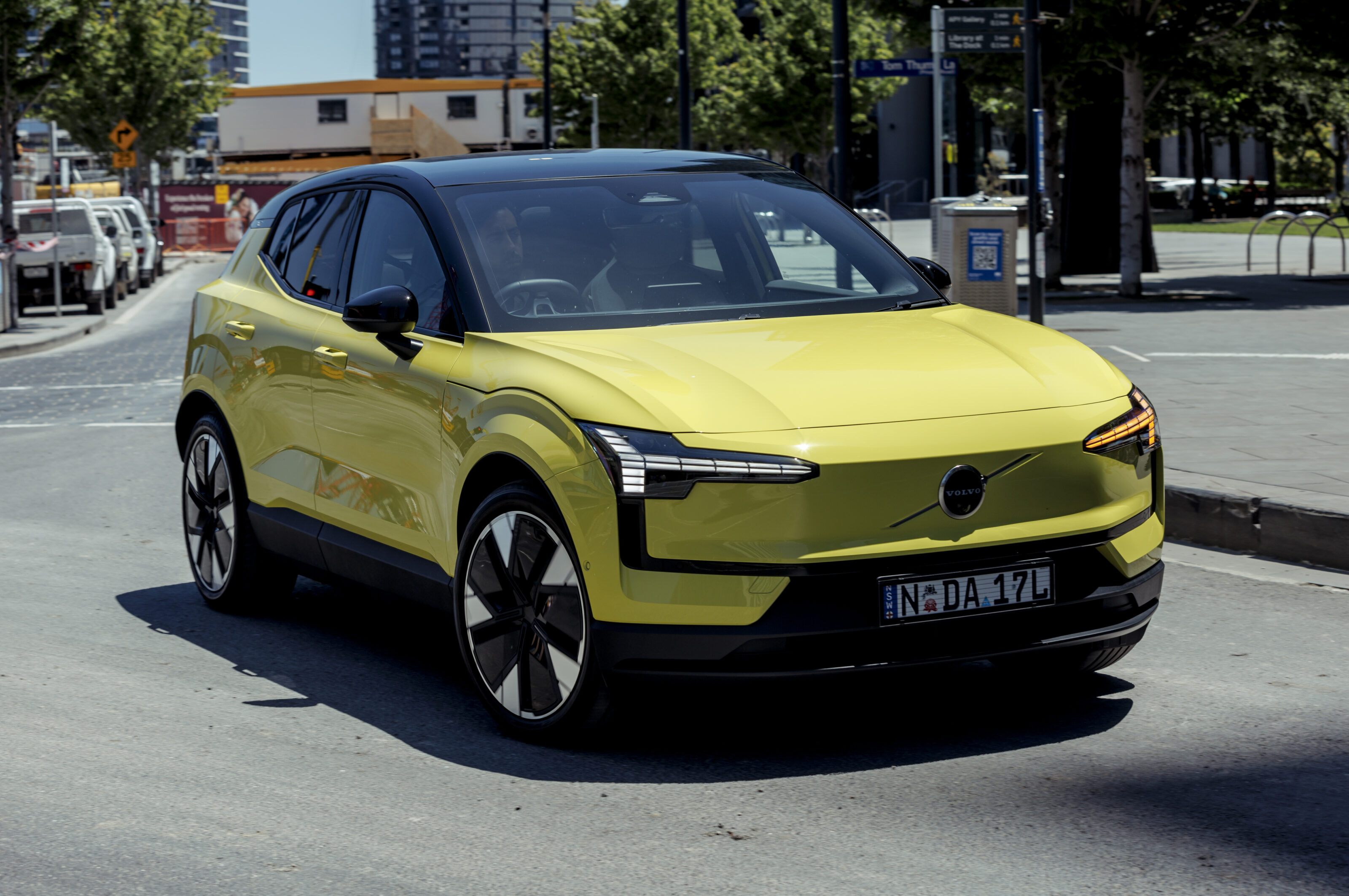
- Price: From $59,990 plus on-road costs (Plus)
- Drivetrain: 200kW/343Nm (single motor) or 315kW/543Nm (dual motor) electric motor, 69kWh battery
- NEDC range, peak charging speed: 445-462km, 153kW
- Warranty: 5-year/unlimited km, 8-year/160,000km for the battery, five years of roadside assistance
- Five-year service cost: Included in the cost of the car
| Driving | |
|---|---|
| Interior | |
| Practicality | |
| Overall value |
Things we like
- Fun to drive and fast
- Stylish, minimalist interior
- Lots of standard equipment
Not so much
- Almost every function is in the touchscreen
- Surprisingly firm ride quality
- Practical but still small
The Volvo EX30 is the brand’s smallest product and rides on a new Geely-derived platform shared with the Smart #1 and #3 and Zeekr X, and all three share the same motors and batteries. Peak charging speed is a healthy 150kW, while the 66kWh battery should allow for up to 462km of range, which is also healthy.
Inside the EX30 is compact but more practical than you might imagine. Two six-foot adults will just about fit in the rear seat with just enough legroom and headroom for taller folk, though the 318-litre boot is not huge. Quality is solid with lots of sustainable materials used throughout the cabin.
Centre of the cabin is a 12.3-inch touchscreen that controls almost every function of the car with very little in the way of buttons – there isn’t even a driver’s display to show the car’s speed, like in a Tesla. The touchscreen itself is quick to use and the display is bright, but it could be easier to use and functions such as the headlights and mirrors are buried within.
The driving experience of the EX30 is fun though some might find its ride quality to be a bit firm. Even the entry-level model is more than fast enough with 200kW of power and a quick 5.3-second 0-100km/h sprint time – the top-spec dual-motors making 315kW of power ensure it’s easily the fastest car in the segment (alongside its Smart and Zeekr cousins, which use the same motors).
The EX30’s aftersales package is good with a five-year service plan included in the price and two-year service intervals, making the EX30 pretty painless from an ownership point of view. Overall, the Volvo EX30 is a strong entrant into the electric small SUV segment – if you don’t need the largest or most practical product.
Lexus UX300e
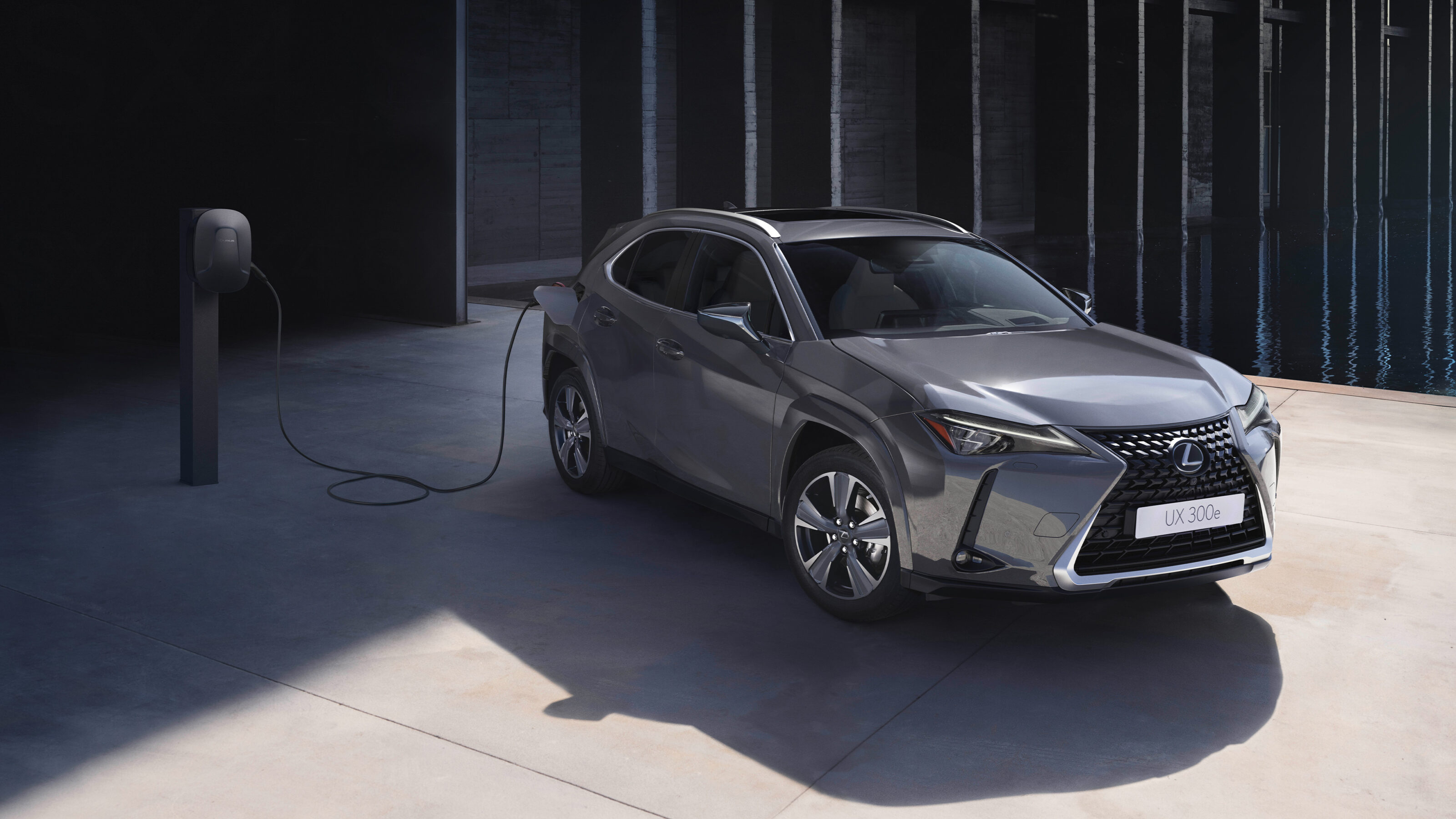
- Price: From $80,720 plus on-road costs (Luxury)
- Drivetrain: 150kW/300Nm electric motor, 72.8kWh battery
- WLTP range, peak charging speed: 560km, 50kW
- Warranty: 5-year/unlimited km, 8-year/160,000km battery warranty, 5 years of roadside assistance
- Six-year service cost: $1,475 ($295 per year)
| Driving | |
|---|---|
| Interior | |
| Practicality | |
| Overall value |
Things we like
- Well equipped
- Excellent quality
- Pleasurable to drive
Not so much
- Slow peak charging speed
- Small back seat and boot
- Faster rivals exist for cheaper
The Lexus UX was the brand’s first properly small SUV when it went on sale locally in 2018. Using the then-new TNGA platform from parent company Toyota, which revolutionised the way its products rode and handled, the UX was a great preview to the company’s next-generation cars.
Some seven years later, the UX has recently been updated with a more powerful and more efficient hybrid drivetrain and new interior tech such as a brand new infotainment system. Making a reasonable 150kW of power, the electric UX is only available in ‘300e’ form.
As we’ve seen in various other Lexus and Toyota products, the use of TNGA platform means that the UX rides and handles quite well. It’s very comfortable, but keen drivers will appreciate how fun it can be from behind the wheel.
The cabin of the UX is excellent quality with plenty of soft touch materials, even on the entry-level UX Luxury. Move up the range to the Sports Luxury or F Sport and even more luxury features like full leather trim and a ‘Kashoku’ door garnish are added for a bespoke feel. The new 12.3-inch touchscreen system is a big step forward on the screen in the pre-updated model too – it’s much faster to use and is equipped with more features.
If there is a downside to the UX’s cabin it’s that it doesn’t feel very spacious. The smaller Audi Q2, for example, offers more rear space than the UX. The electric UX’s 314-litre boot is small and the high floor means that it isn’t that practical. But there’s still plenty to like about the Lexus UX like its lovely driving experience, quality cabin and very efficient drivetrain.
Kia EV3
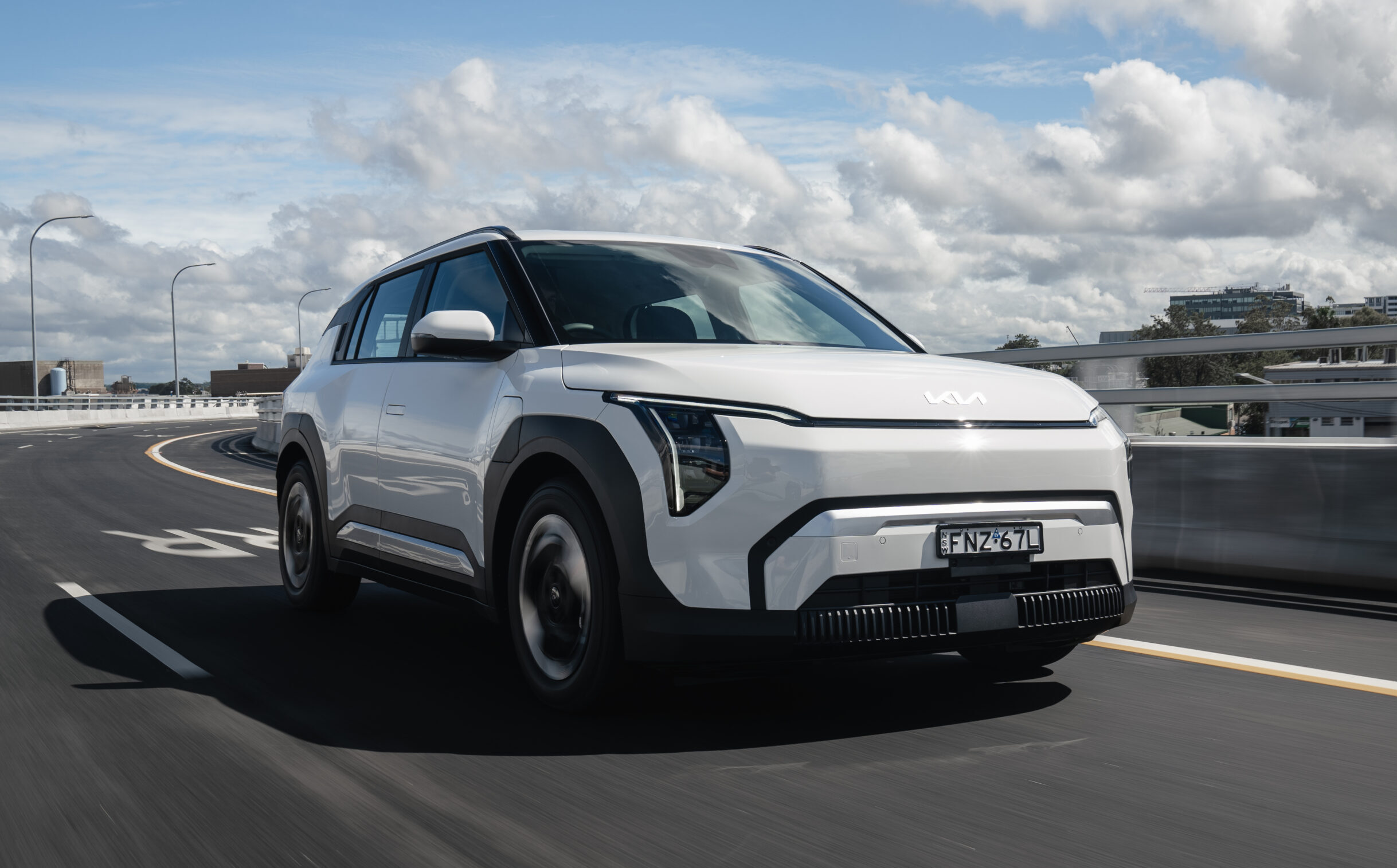
- Price: From $48,990 drive away (Air Standard Range)
- Drivetrain: 150kW/283Nm motor, 58.3-81.4kWh battery
- WLTP range, peak charging speed: 436km-604km, 127kW
- Warranty: 7-year/unlimited km, 7-year/150,000km battery warranty, 12 months of roadside assistance renewed with each Kia service
- Six-year service cost: $1,285 ($257 per year)
| Driving | |
|---|---|
| Interior | |
| Practicality | |
| Overall value |
While the EV6, EV9 and EV5 have come before it, Kia’s new EV3 electric small SUV looks to be the most compelling yet as it’s well priced, characterful and practical for its size. Priced from $48,990 drive away (depending on location), the EV3 has lowered the price of entry to an electric Kia by around $7,000 and has made the brand more accessible and appealing to those who want a cheaper and/or smaller EV.
Inside the EV3 is an almost-identical dashboard to other recent Kia products like its larger electric siblings and the new K4 small car, with dual 12.3-inch displays and a small 5.0-inch touchscreen for the dual-zone climate control in the middle of them. The EV3’s cabin is practical with lots of storage space, while the 460-litre boot is healthy for its size.
For now, there’s only a single 150kW electric motor variant available in Australia, though a dual-motor variant is said to be coming later this year with more power for those wanting more pep. Like other recent Kia models, the EV3 has been Australian-tuned for our market for greater ride comfort over our rubbish roads.
The peak charging speed is reasonable, while the range is excellent. Also excellent are the EV3’s servicing costs, which are far less than we’re used to from the brand – and Kia’s excellent seven-year warranty is still present.
It’s only just gone on sale in Australia, but we think that the Kia EV3 is going to sell well locally. It’s well priced at the entry point to the range, it’s cute to look at, offers a good range and performance and is inexpensive to service.
Chery Omoda E5
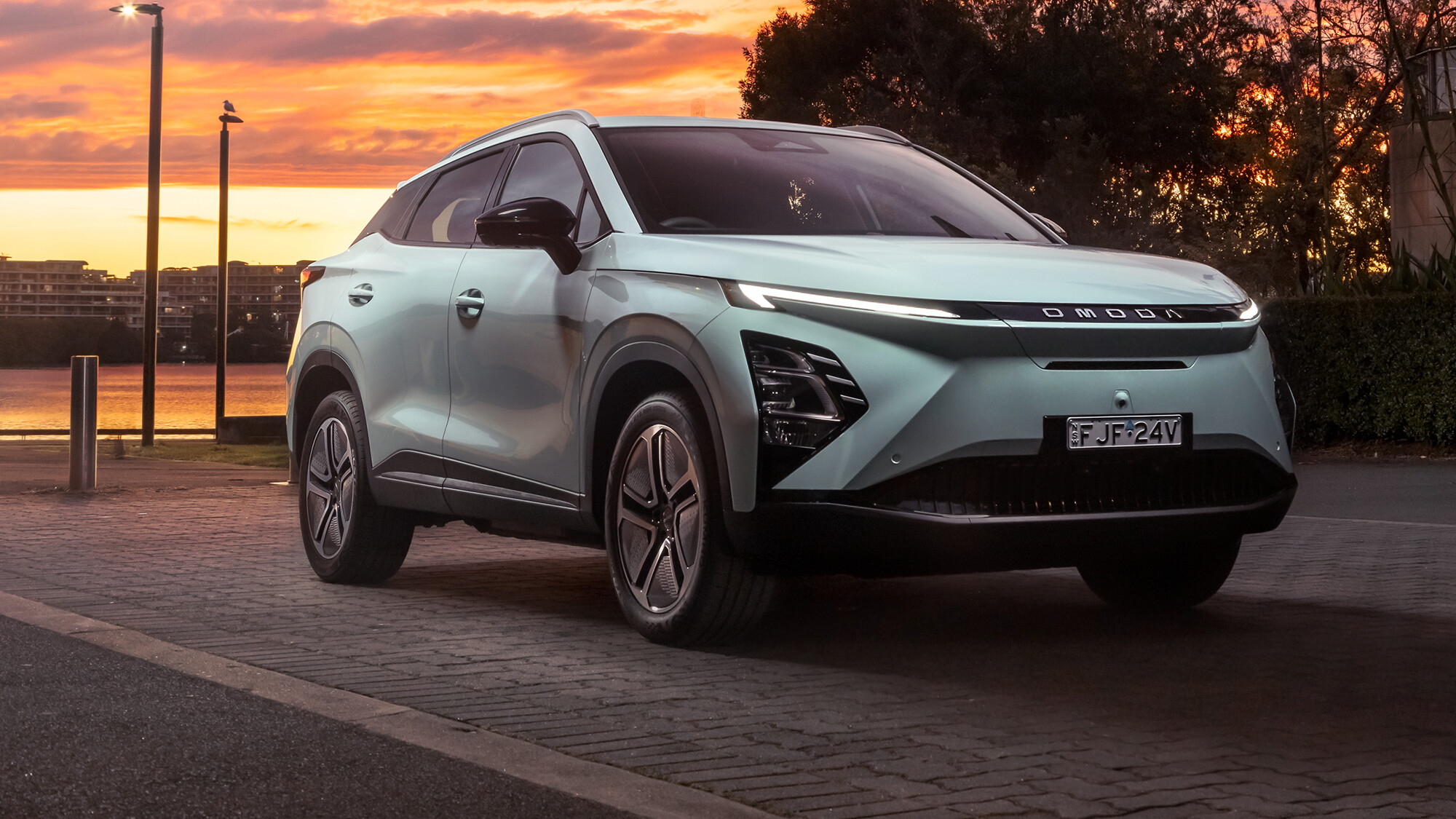
- Price: From $42,990 plus on-road costs (BX)
- Drivetrain: 150kW/340Nm electric motor, 61.1kWh battery
- NEDC range, peak charging speed: 460km, 80kW
- Warranty: 7-year/unlimited km, 8-year/unlimited km battery warranty, 12 months of roadside assistance renewed with each Chery service up to eight years in total
- Six-year service cost: $950 ($190 per year)
| Driving | |
|---|---|
| Interior | |
| Practicality | |
| Overall value |
Things we like
- Good value for money
- Excellent warranty and servicing
- Lots of standard equipment
Not so much
- Overbearing safety assist features
- Suspension needs re-tuning
- Big price jump over ICE Omoda E5
The Chery Omoda E5 is the first electric offering from Chery in Australia. Based on the popular Omoda 5 small SUV, the E5 uses a 150kW/340Nm electric motor instead of the regular model’s petrol engine. Dashboard design aside, the Omoda E5 is otherwise unchanged inside: the back seat room is a bit tight for taller adults and the 300-litre boot isn’t big either, though it does feature a full-size spare wheel under the boot floor.
The ICE Omoda 5’s cabin is treated to a higher level of quality and a new dashboard design in the E5 with a more conventional bridge-type centre console instead of the ICE model’s sliding unit. That makes it a bit more practical, though the shortcut buttons have been lost in the process and that makes the infotainment system more difficult to use.
Behind the wheel of the Omoda E5 is a mixed bag. On smooth roads, it’s generally comfortable but even smaller bumps reveal a busy ride quality. The E5’s acceleration is strong – it hits 100km/h in just 6.7 seconds – but under full acceleration, torque steer is part of the package and the soft suspension means there’s plenty of body roll.
Where Chery wins back big brownie points is in its aftersales package: a seven-year/unlimited km warranty with an eight-year battery warranty – that too is rated to unlimited mileage, unlike many other car makers – and very cheap service costs of just $950 over a six-year period.
Overall, the Chery Omoda E5 is a tempting effort into the electric small SUV segment thanks to its cheap ownership costs, exotic styling, quality cabin, good performance and reasonable range. Its suspension could do with a re-tune, however, and the active safety features can be irritating as well. But if value is the name of the game for you, the Omoda E5 is a strong contender.
BMW iX1

- Price: From $80,600 plus on-road costs drive away (eDrive20)
- Drivetrain: 150kW/250Nm (eDrive20) or 230kW/494Nm (xDrive30) electric motor, 66.5kWh battery
- NEDC range, peak charging speed: 400-464km, 130kW
- Warranty: 5-year/200,000km, 8-year/160,000km battery warranty, 3 years of roadside assistance
- Six-year service cost: $2,250 ($375 per year)
| Driving | |
|---|---|
| Interior | |
| Practicality | |
| Overall value |
Things we like
- Good value for money
- Good quality and practical cabin
- Lots of standard equipment
Not so much
- Not much choice
- Most functions controlled through touchscreen
- No spare wheel
An electric version of BMW’s smallest SUV, the X1, the BMW iX1 is very hard to distinguish from its ICE sibling: the wheels and grilles are the biggest clue. But like the regular X1, the iX1 presents a strong all-rounder for the small electric SUV segment thanks to its good driving experience, excellent quality and very practical cabin and good range.
Inside the iX1 is identical to the X1 with excellent quality materials and plenty of technology. Unlike larger BMW models, the centre display is only a touchscreen, which can be less helpful at speed as the screen’s menu structure can be a bit confusing. But the system is fully featured and quite quick, plus the screen quality is excellent.
As we saw with the X1, the iX1’s cabin is quite practical with big door bins, a funky centre console bridge and a huge back seat that two tall adults would be quite comfortable sitting in. The boot measures a large for the segment 490 litres – that’s 50L less than the X1 but still a good size.
On the road, the iX1 presents good driving dynamics, a well-tuned ride quality and ample performance. Its range is reasonable, though its peak charging speed could be improved. Its active safety features are excellent, however.
In summary, the BMW iX1 is a strong contender for best electric small SUV. It’s not cheap to buy, but is a well-rounded product that deserves strong consideration thanks to its practicality, good range and performance, long list of standard equipment and well-tuned safety features.
Mercedes-Benz GLA/EQA, GLB/EQB
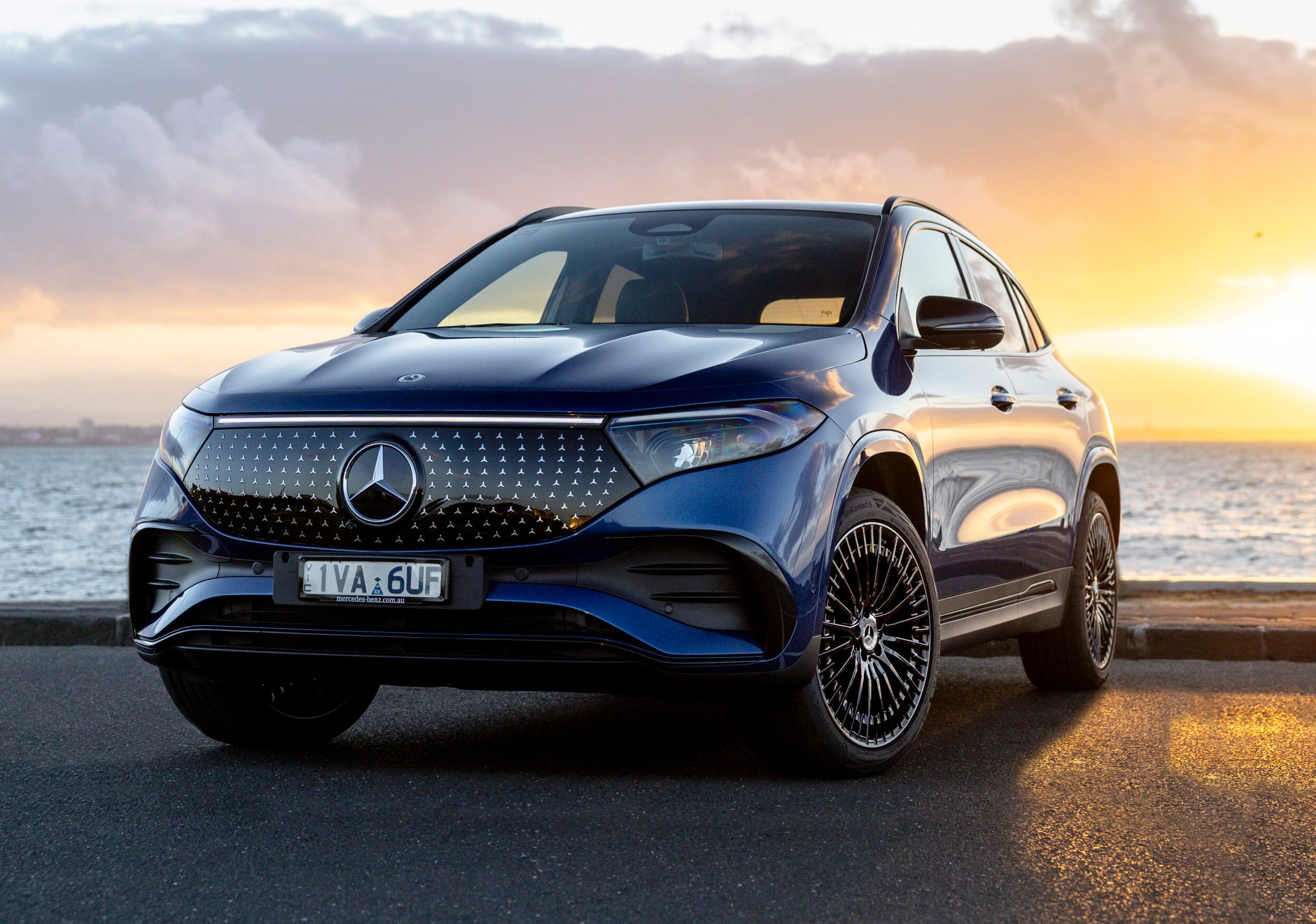
- Price: From $63,600 plus on-road costs (GLA)
- Drivetrain: 1.3L turbo (120kW/270Nm) or 2.0L turbo petrol (250: 165kW/260Nm, AMG 35: 225kW/400Nm), 140kW/375Nm electric motor, 70.5kWh battery (EQ)
- Combined fuel economy, CO2 emissions, fuel type: 7.4L/100km – 9.1L/100km, 167-207g/km, 98RON
- WLTP range, peak charging speed (EQ): 564-578km, 100kW
- Warranty: 5-year/unlimited km, 8-year/160,000km battery warranty, 5 years roadside assistance
- Six-year service cost: $2,650 ($530 per year)
| Driving | |
|---|---|
| Interior | |
| Practicality | |
| Overall value |
Things we like
- Good range and performance
- Good quality and practical cabin
- Lots of standard equipment
Not so much
- Expensive to service
- GLB/EQB’s third row is small
- Slow peak charging speed for EQs
So far a big success for the brand, the Mercedes-Benz GLA and GLB – and their electric EQA and EQB siblings – are offered in a wide range with four petrol variants including 200, 250, AMG 35 and AMG 45 (GLA only) models, while the electric versions offer just a single ‘250+’ spec with up to 578km of range from a charge, which is healthy in the segment. Peak charging is 100kW, which is not that fast, but the range should reduce the need to visit a charger.
On the road, both the models impress with a refined and enjoyable driving experience just as you’d expect from the Mercedes-Benz brand. While neither are the last word in sportiness, they are quite comfortable.
Inside is a modern cabin that features funky ambient lighting, bright screens and high quality finishing throughout. Uniquely in the segment too, the GLB and EQB feature seven seats – though the third row is definitely best described as kid-only. Fold the third row down and you get a healthy 495-litre bootspace, which is much larger than the 340L boot in the EQA.
As you’d expect though, both the models aren’t cheap to buy or maintain with the entry-level BMW iX1 around $5,000 less expensive and both quicker and faster charging. In addition to that, Merc’s servicing pricing is expensive at over $500 annually.
But the Mercedes-Benz GLA, GLB, EQA and EQB still offer a lot to buyers like good performance and range, quality cabins with exotic features and good practicality. The price is a factor, of course, but doesn’t take away from the solid all-round ability of these SUVs.
Smart #1 and #3

- Price: From $54,900 plus on-road costs (#1), $57,900 +ORC (#3)
- Drivetrain: 200kW/343Nm (Pro+ and Premium) or 315kW/543Nm (Brabus) electric motor, 66kWh battery
- WLTP range, peak charging speed: 400-455km, 150kW
- Warranty: 5-year/130,000km, 8-year/150,000km warranty, 5 years of roadside assistance
- Four-year service cost: $2,445–$3,120 ($611–$780 per year)
| Driving | |
|---|---|
| Interior | |
| Practicality | |
| Overall value |
Things we like
- Solid value for money
- Fun driving experience
- Lots of standard equipment
Not so much
- Lacklustre warranty, expensive servicing
- Boots of both the #1 and #3 not huge
- Complicated touchscreen
While the Smart brand gives memories of tiny city cars that can park perpendicular to the kerb, these days the brand is about electric small SUVs and both of its models – the #1 (pictured) and #3 – fit into that category. Using the same platform, mechanicals and interior design, the #1 is slightly shorter but taller than the coupe-like #3.
Both offer two powertrains that are also used in the Volvo EX30 and Zeekr X: either a 200kW single-motor unit or a 315kW dual-motor set up that uses the famous Brabus name. All #1s and #3s drive quite well – they’re a bit softer than the EX30 and are all the better for it because they still handle well, but are more comfortable.
The Smart twins also have higher quality, more user-friendly interiors than the Volvo, with more liberal use of soft-touch plastics and more screens, including both a digital driver’s display and a head-up display – both of which the EX30 lacks. Their back seats are also larger than the Volvo, while the #3’s boot in particular is big for its size.
As with its platform mates, the Smart twins’ peak charging speed is healthy, and the efficiency of the single motor variants in particular is good – the Brabus can be a bit energy hungry, reducing its range. The service costs for both models are expensive as well.
But overall, while they’re not quite as quirky as the original Smarts from the early 2000s, they have character in an often bland part of the market. They’re also good value for money, and drive well too. Really, the only potential issues are the expensive servicing and the complicated touchscreen – but other than that, the new Smart range is definitely worth consideration.
Zeekr X

- Price: From $49,900 plus on-road costs (RWD)
- Drivetrain: 200kW/343Nm (RWD) or 315kW/543Nm (AWD) electric motor, 66kWh battery
- NEDC range, peak charging speed: 470-540km, 150kW
- Warranty: 5-year/unlimited km, 8-year/160,000km battery warranty, 5 years of roadside assistance
- Six-year service cost: $2,800 ($466 per year)
| Driving | |
|---|---|
| Interior | |
| Practicality | |
| Overall value |
Things we like
- Futuristic design in and out
- Good quality and practical cabin
- Lots of standard equipment
Not so much
- Everything controlled through touchscreen
- Overbearing safety features
- Expensive service pricing
As we’ve seen with both the Volvo EX30 and Smart #1 and #3 cousins, the Zeekr X – which uses the same platform and mechanicals as those cars – features a 66kWh battery that can be charged at up to 150kW with either a 200kW single motor or 315kW dual-motor drivetrain. So in that case, what separates the Zeekr from its cousins?
The Zeekr is undoubtedly designed to be sharper – while the Smarts are cute and European and the Volvo is quite Nordic in its look, the Zeekr is more futuristic in appearance. The same sort of futuristic vibe extends to the cabin where the big touchscreen dominates and thankfully, unlike the EX30, there’s also a driver’s display.
Like the Smart twins, the Zeekr X is less sporty than the EX30 and that’s helped by the 100mm-longer wheelbase for extra ride comfort. But it still drives assuredly and even though some of its active safety features can be irritating, they’re much better tuned than a lot of other new cars.
The Zeekr’s cabin is warm and inviting, and more spacious than you might first think given its small dimensions. Centre of the cabin is a 14.6-inch touchscreen that’s mostly easy to use and well featured, while we also quite like the light colouring which makes it feel airy.
Overall, we think the Zeekr X has definite appeal in the new car market. While the brand isn’t yet as well known as its cousins, it impresses with funky design, great quality and a solid driving experience. The warranty could be longer and it could be less expensive to service, but we think it’s overall worthy of a test drive.
Audi Q4 e-tron
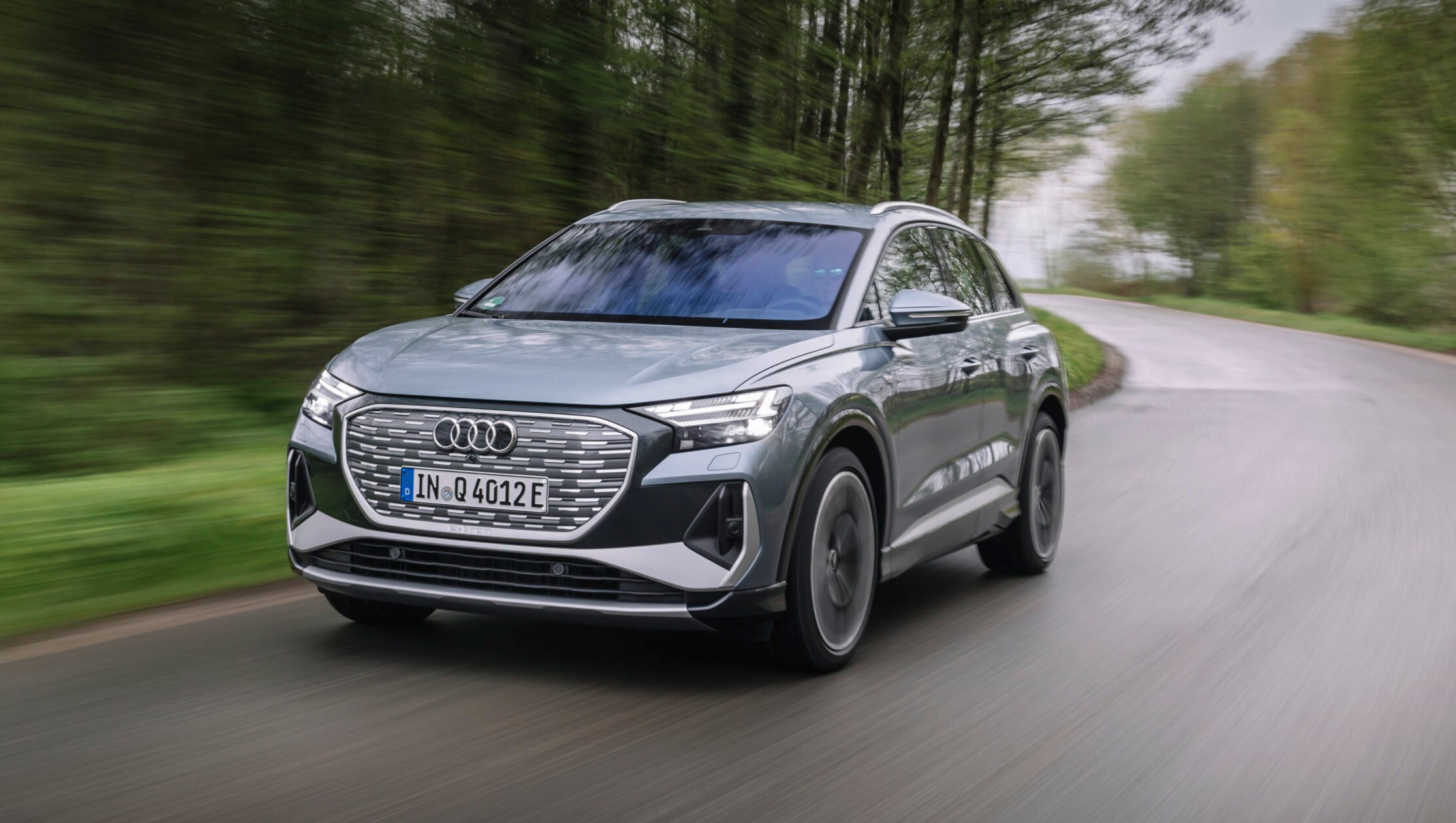
- Price: From $84,900 plus on-road costs (45 wagon)
- Drivetrain: 210kW/545Nm (45) or 250kW/134Nm + 545Nm (55) electric motor, 82kWh battery
- NEDC range, peak charging speed: 448-524km, 175kW
- Warranty: 5-year/unlimited km, 8-year/160,000km battery warranty, 5 years of roadside assistance
- Six-year service cost: $2,050 ($341 per year)
| Driving | |
|---|---|
| Interior | |
| Practicality | |
| Overall value |
Things we like
- Choice of bodystyles
- Practical cabin
- Good performance and range
Not so much
- Drum rear brakes
- Expensive option pricing
- Not cheap to buy
Using the same platform as cars like the Volkswagen ID.4 and Skoda Enyaq, the Audi Q4 e-tron is the brand’s entry level EV for now and is available in both traditional wagon and Sportback coupe bodystyles in Australia. Two variants are available in each bodystyle – 45 and 55 – and up to 524km of range.
The base Q4 e-tron 45 uses a 210kW/545Nm rear-mounted electric motor, while the 55 adds another motor on the front axle for a higher 250kW total output and quicker performance, though less range thanks to extra weight. Both can charge quickly at up to 175kW.
The cabin of the Q4 e-tron is well featured, comfortable and features a lot of technology, though the quality could be better. It’s practical and the rear seat – even in the sloping roofed Sportback – can handle taller adults fine. The Sportback strangely has more bootspace than the wagon at 535 litres (versus 520L), which is healthy for the segment.
Audi covers the Q4 e-tron with a five-year warranty with five years of roadside assistance, while a six-year service plan costs just $2,050. Overall, the Q4 e-tron is a solid entrant as the brand’s smallest EV yet. It’s not cheap to buy and there are still some option packages available but the fundamentals are solid: it drives well, it’s practical and it charges quickly.
Hyundai Kona Electric
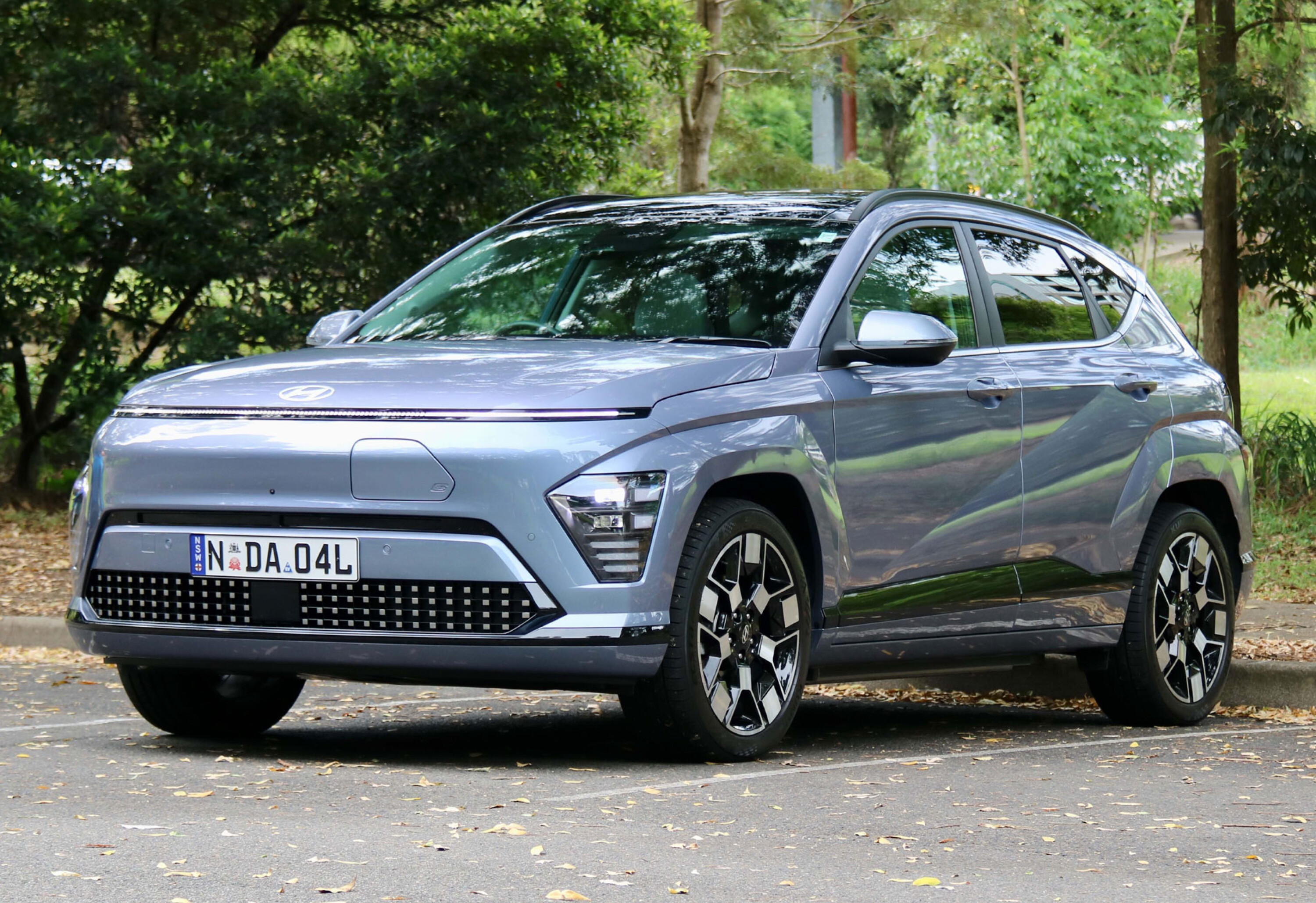
- Price: From $54,000 plus on-road costs (Standard Range)
- Drivetrain: 99kW/255Nm – 150kW/395Nm, 64.8kWh
- WLTP range, peak charging speed: 370-505km, 102kW
- Warranty: Five-year/unlimited km and 8-year/160,000km battery, 12 months’ roadside assistance added with each dealer service
- Four-year service cost: $1,040 ($260 per year)
| Driving | |
|---|---|
| Interior | |
| Practicality | |
| Overall value |
Things we like
- Wide range of variants
- More practical than the last Kona
- Well equipped across the range
Not so much
- Kona Electric is not cheap
- Cabin quality could be better
- Lots of features reserved for top-spec Premium
The second-generation Hyundai Kona has been on sale in Australia for over a year now and, like its predecessor, is proving popular with over 17,000 sold last year alone. The new Kona is larger, more mature, more refined and features an optional hybrid drivetrain for the first time locally, which we think is the model to choose.
Where the Kona has seen the biggest improvement is in its interior design as it’s now more up-to-date than the previous model, which felt dated in comparison with newer Hyundai vehicles. The Kona’s cabin could be better quality, but there’s no denying the awesome practicality and pleasing ergonomics throughout.
The rear seat of the new Kona is larger than the old one and two adults will fit perfectly fine this time around. The boot is also larger now at 407 litres seats up and 1,241L with them folded, while there are some clever tricks like a dual-level boot floor to enhance its practicality. Impressively, all models feature a spare wheel.
While there are lots of petrol engines available, the electric Kona is available in either 99kW or 150kW forms with up to 505km of range. The new Kona drives well with a great ride quality and improved refinement as well, especially with road noise.
The new Hyundai Kona is a worthy competitor in the small SUV segment thanks to its all-round ability: it’s much more practical this time around, good to drive, cheap to service and – finally – offers a hybrid choice.
Best Small SUV series
Looking to get into a brand-new small SUV? Our stories below will guide you to the model that best suits your needs!


